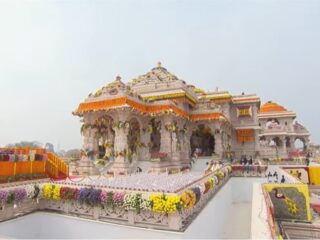Asghar Ali Engineer
(Secular Perspective July 16-31, 2009)
The recent utterances of French President Sarkozy that Burqa will be banned in France and that wearing veil is not religion but torture and punishment for women, have caused great stir among Muslims and lot is being written in the media on this subject. As it is expected most Muslims, men and women have come out in support of wearing veil and are defending it in various ways theological as well as non-theological.
Earlier French Government had banned wearing veil or scarf over head by Muslim girls in schools. The Sikhs also suffered as their children were banned from wearing turban in schools. At that time also there was strong reaction from various sections. Sikhs were also greatly agitated and Sikhs from various European countries and even from North America demonstrated on the streets of Paris but nothing came out of it.
There are two things involved here one, the question of democratic rights and two, theological arguments. As far as democratic rights are concerned all Muslims as well as non-Muslims, should thoroughly debate this issue and as far as theological arguments are concerned the Muslim theologians as well as Muslim intellectuals should equally thoroughly debate it and see whether covering of whole body from head to toe including the face is divine ordained or is cultural and patriarchal practice being justified in the name of religion.
First, let us examine the issue in the light of democratic rights. One perspective in this regard is that it is democratic right of an individual what to wear and what not to wear. A government cannot dictate citizens in matters of what to wear and what to eat. The French Government, if at all it bans burqa (still the issue is under discussion and a parliamentary committee is examining whether to ban or not to ban), it will go against democratic norms and practices.
In this regard I would like to point out that countries like France are yet to come to terms with pluralism and multi-culturalism. Europe, throughout centuries has been mono-cultural and mono-religious (Catholics and Protestants are offshoots of Christianity and both are embedded in western culture) and it was migration from Afro-Asian countries, mainly former colonies to Europe after Second World War when de-colonization began, European countries experienced pluralism and multiculturalism.
The argument by French President that wearing Burqa, a religious apparel cannot be permitted in ‘secular’ France is based on this mono-cultural practice of secularism. France too, is multi-cultural today as many African Christians and Muslims from its former French colonies have come to France but unlike U.K. France has really not come to terms with multi-culturalism. French culture really reigns supreme. It is intolerant of other cultural practices though tolerance is great democratic value. It is surprising how intolerant French Government is towards other cultures and religions.
A truly democratic nation would respect other cultural and religious practices and would not treat its own citizens as aliens and ban their practices. If some Muslim women decide to wear burqa covering their bodies from head to toe, it is their decision even if it tortures them. Indian Court has also approved of right of Jain monks to go on fast unto death as their religious practice though it involves extreme torture to the body. After all they are torturing themselves, not others and particularly because it is their religious belief. Thus French Government will be better advised if it becomes more tolerant of other cultures and other religious practices.
Now coming to Islamic theological argument it is not correct to believe that Qur’an prescribes covering of women’s body from head to toe and also the face. What Qur’an advises is not to display their adornments publicly and the word used in verse 24:31 is zeenah (adornment), not veil (hijab). And the words of the verse are also advisory, not obligatory. It is better if they do not display their adornment (zeenah) publicly but they can do so privately in their own homes and before their own people, like parents, parents in-law, uncles, other women and children.
There is no mention of hijab in the sense of covering face in Qur’an at all. All Muslim jurists and theologians agree that according to verse 4:31 women can keep their face open and apply collyrium to their eyes and can also keep their hands open and wear rings in their fingers. However, they insist on covering their heads and hence in Iran women are officially required to cover their heads with what they call chador but can keep their face open. This verse also asks women to cover their breasts.
This clearly shows that in pre-Islamic Arab society women were keeping their breasts at least partly, if not wholly, open as many women in western societies do today. Also, there is debate between theologians whether this verse refers to external adornment or beauty of the body itself, which would necessitate covering of whole body from head to toe so as to hide the beauty of the body.
The other view is that it refers to only external adoration, not the beauty of the body and this view is supported by what is said in the end of the verse i.e. “Let them not strike their feet so that the adornment that they hide may be known.” Many Arab women used to wear anklets and strike their feet to attract attention to their adornment which the Qur’an advises them not to do.
This verse 24:31 makes an exception for covering and says, “…do not display their adornment except what appears thereof”. Throwing light on this exception Tabari, one of the noted early commentator on the Qur’an says what she may not cover under this exception 1) adornment of dress or the clothes that a woman wears i.e. she need not cover the clothes she wears; 2) also she is not required to cover adornment like collyrium, rings, bracelets and her face. In support of his view Tabari also says while praying a woman does not cover her face and her hands up to her elbow while she covers rest of her body.
There is also a hadith the Prophet (PBUH) told Asma, his wife ‘Aisha’s sister, when she appeared wearing thin clothes, “O Asma, when woman attains her puberty it is not proper that any part of her body should be seen except this, and he pointed to his face and hands.” (Sunan Abu Daud 31:30). This hadith settles it conclusively that face and hands up to elbow need not be covered.
However, the burqa which covers woman from head to toe including face is widely spread in Islamic world. What is its origin? It is certainly more cultural than religious. One eminent scholar and judge Amir Ali who wrote extensively on Islam and Islamic history maintains that it originated much after the Prophet i.e. around 7th century hijra (13th century A.D.) that is after sack of Baghdad. It was unknown during the early period of Islam.
However, another eminent Islamic historian Maulana Shibli who was also Justice Ameer Ali’s contemporary challenged this position and wrote, in his article on Purdah that it existed in pre-Islamic Arab society and Islam simply accepted it. Whatever the position one thing is absolutely clear that Qur’an does not recommend covering of whole body from head to toe, nor it requires covering of face. And whether Shibli is right or Justice Ameer Ali, it became part of Islamic culture.
Today many Muslim women wear it out of social or family compulsion and many wear it voluntarily as a mark of Islamic tradition. There are other reasons too. For many purdah is mark of Muslim identity but then it is also justified as protective of woman’s dignity. These women say they feel quite safe and have nothing to fear and no one can molest or rape them. They are taken as serious and no nonsense women. May be to some extent but women can be much more safer if proper social environment is there and enforcement of law and order is stricter.
Many women wear burqa as a matter of tradition and some under family compulsion. These women also say it is not in any way hindrance for their work. Well, may be it is rationalization of a tradition. Also, sometimes what appears to be out of choice may not really be so. Choice is also dictated by the environment we live in. In consumer society too we feel are choosing out of free will but it is more often our choice is dictated by high pressure advertisement of products.
Cultural traditions also exert silent pressure and what appears to be ‘choice’ is really not free choice. Whatever the case burqa or hijab for Muslim women in their own cultural environment is not really burden or chain as it appears to those totally alien to this tradition. Westerners are shocked because their cultural traditions are radically different. The contemporary western culture revels in exposing larger part of woman’s body than hiding it. Western tradition is just the opposite.
In my opinion neither woman’s body should be exposed nor completely covered. They should be neither treated as object of man’s lust nor something to be hidden or imprisoned. She should dress to maintain her dignity and individuality as a free agent that is what is most desirable and that is what her status is in Qur’an. Her sexuality should neither be feared nor used as lust but celebrated as a divine gift.
———————————————–
Centre for Study of Society and Secularism
Mumbai.




